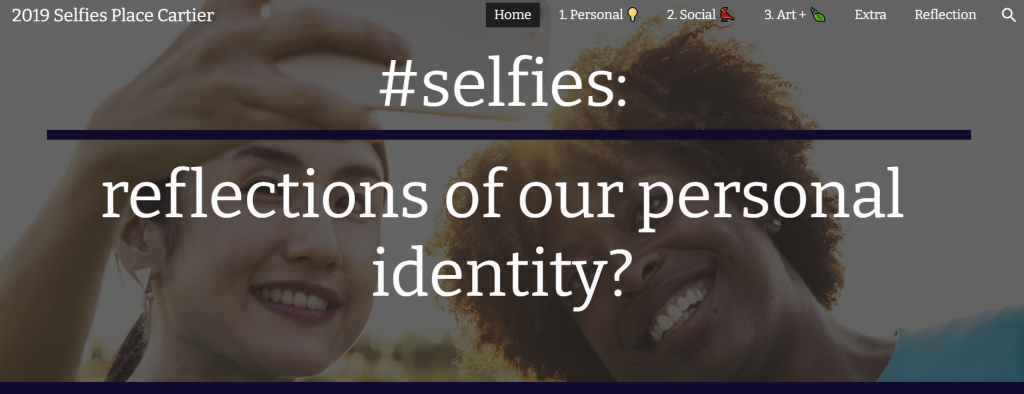In Quebec, all students are expected to be in school under normal ratios, that means the same teacher:student ratio in effect at a given school as before Covid-19. (I still find it mind-boggling that the exact same directive goes for schools in Montreal with over 29 000 cases of the virus as schools in the Lower Saint Lawrence, with 75 cases (as of the time of publication.) But that is the case.)
Actually, that directive doesn’t apply to all students, some secondary schools can opt to create secondary 4 & 5 (Grades 10 & 11) groups that work online so as to facilitate regrouping of students for different course options though 50% of a student’s time must be at school.
Ok. So what does that look like?
I don’t have all of the answers to that question. But I know of at least one high school in the Greater Montreal area that is planning for simultaneous classes for their Secondary 4 & 5 courses. One teacher describes:
I am teaching 1/2 of the group in class, while I am teaching the other 1/2 online, all at the same time. [Then the groups switch the next time she teaches that particular class]
I also need to take 5 minutes to let cleaning product soak on my desk and then clean anything and everything I might touch, then clean my hands, then set up, then go online and add kids from the “lobby” waiting room and then teach in whatever is left over in the 60 min class that we have. Oh and I need 5 min to put my things together to change classrooms at the end.
I am hopeful that when teachers need the support from the parents during contract negotiations, that we will get it.
This teacher, like many others across Quebec, teaches 8 sections of different courses at different grade levels. Four of the sections will be organized like this, the other four are entirely face to face. Each of the groups are made up of 30 – 35 students and the students all stay in their base room most of the day so the teacher needs to move from class to class.
Pause a bit and let the logistics of all of that sink in.
This is far from ideal. But what can we do? There aren’t enough teachers for the start of the year as it is. And even if there were more teachers available – the government has directed the same class ratios as normal so schools can only hire 1 teacher per whatever that ratio is for them. In high school the maximum number of students per class is supposed to be 32 but it can go higher (I have seen a class of 47 at Secondary 3…) and in certain cases the max is set lower.
To be clear. Simultaneous teaching does NOT equal smaller class sizes. The teacher is still responsible for all of the students and his or her attention is now divided between multiple spaces. Have you ever done something on your phone or computer while someone in the room is talking to you? Think about teaching that way… Regardless. We know that the teacher will make it work, that is what teachers do, right?
So how can we make this easier?
I’d likely treat the whole class as if they were all learning online. That way I wouldn’t need to create two versions of a lesson plan for my online learners and my in class learners. I’d create learning that can be accessed from anywhere and completed in a variety of ways. That way if each of my in class students didn’t have a device of some sort, they can still do the ‘online’ activities as I project it on my whiteboard (interactive white board or not). And if we all need to jump online at one point in the school year, the material will already be there.
So what would this look like?
I use Google, so I’d make a site like these ones and organize the activities and instructions so that they can be completed either at home or in the classroom. The syllabus and schedule would be available on the site but I’d likely also use Google Classroom as a communication platform so students can submit and receive feedback on their assignments.


Students could access this no matter where they happen to be located during the lesson. I’d probably also make sure that when the groups are with me, I’d divide them up into even smaller groups so I can teach them a mini-lesson, ask and answer questions, conference with them, assess them…whatever but in smaller groups (socially distanced) so I can have a handle on formative assessment and touch base with each of them regularly during this incredibly weird school year.
This might look like teaching in stations, where certain stations can only happen in the classroom. Or, if you teach students who will ALWAYS be at home, certain groups have independent work while you conference with small groups, maybe using a breakout room in Zoom or Meet or a different channel in Teams.
Accessibility & Inclusion
Another benefit of putting everything in one online place is that it creates more accessibility in general. No need to provide digital copies of something for students who need it as per their IEP (individual learning plan) … it’s there already. No need to provide students who miss a class with your presentation or notes … it’s already there. No need to create something new each time someone may need an accommodation or need to miss class for whatever reason. And, once again, if school goes online for all, my materials will already be there.
Relationship & Community
And if everyone accesses their class material via the online platform, then that can help to create a class community where everyone is included in the same way no matter where they happen to be located. This can go a long way to developing the teacher/student relationship that is so needed, especially this year, yet may seem so far away when we are behind masks, in different rooms, in different buildings.

Leave a Reply